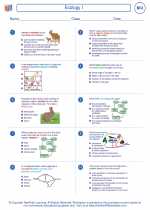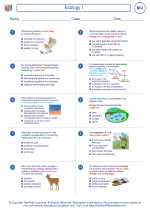Galaxies
A galaxy is a massive, gravitationally bound system that consists of stars, stellar remnants, interstellar gas, dust, dark matter, and an important but poorly understood component tentatively dubbed dark energy. Galaxies contain varying amounts of star systems, star clusters, and types of interstellar clouds.
Types of Galaxies
There are three main types of galaxies:
- Spiral Galaxies: These galaxies have a flat, spinning disk with a central bulge surrounded by spiral arms. The Milky Way is an example of a spiral galaxy.
- Elliptical Galaxies: These galaxies are ellipsoidal in shape and have no apparent structure. They are composed mainly of old stars and contain very little interstellar matter.
- Irregular Galaxies: These galaxies do not fit into the spiral or elliptical categories and have irregular shapes. They often contain large amounts of interstellar matter and young stars.
Galactic Formation and Evolution
Galaxies are thought to have formed from the gravitational collapse of dense regions within the early universe. As galaxies evolve, they can interact and merge with other galaxies, leading to the formation of different types of galaxies and influencing their structures and properties.
Studying Galaxies
Galaxies can be studied through various methods, including:
- Observational Astronomy: Using telescopes and other instruments to observe and analyze the light and other radiation emitted by galaxies.
- Computer Simulations: Creating computer models to simulate the formation and evolution of galaxies based on known physical principles.
- Cosmological Models: Developing theories and models to understand the large-scale structure and behavior of galaxies within the context of the universe as a whole.
Study Guide
When studying galaxies, it's important to understand the following key concepts:
- The properties and characteristics of different types of galaxies.
- The processes involved in the formation and evolution of galaxies.
- The methods and technologies used to study galaxies.
- The role of galaxies within the larger framework of the universe and cosmology.
Additionally, familiarizing yourself with prominent galaxies, such as the Milky Way, Andromeda, and the Magellanic Clouds, can provide valuable context for understanding the diversity and complexity of galactic systems.
Remember to engage with visual aids, such as images and diagrams of galaxies, to reinforce your understanding of their structures and features.
Good luck with your studies!
.◂Biology Worksheets and Study Guides High School. Ecology I

 Worksheet/Answer key
Worksheet/Answer key
 Worksheet/Answer key
Worksheet/Answer key
 Worksheet/Answer key
Worksheet/Answer key
 Vocabulary/Answer key
Vocabulary/Answer key
 Vocabulary/Answer key
Vocabulary/Answer key
